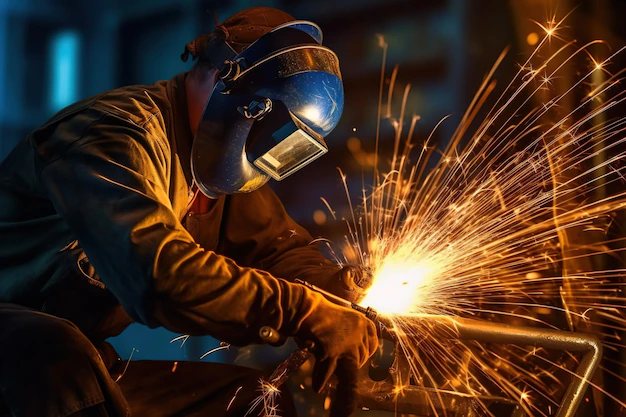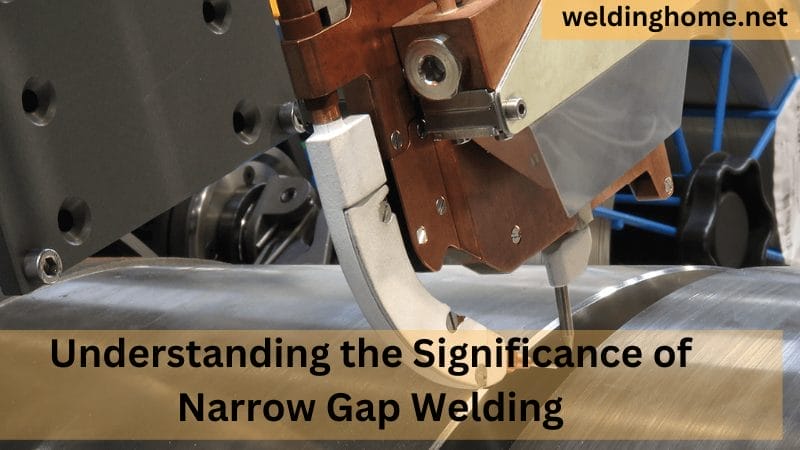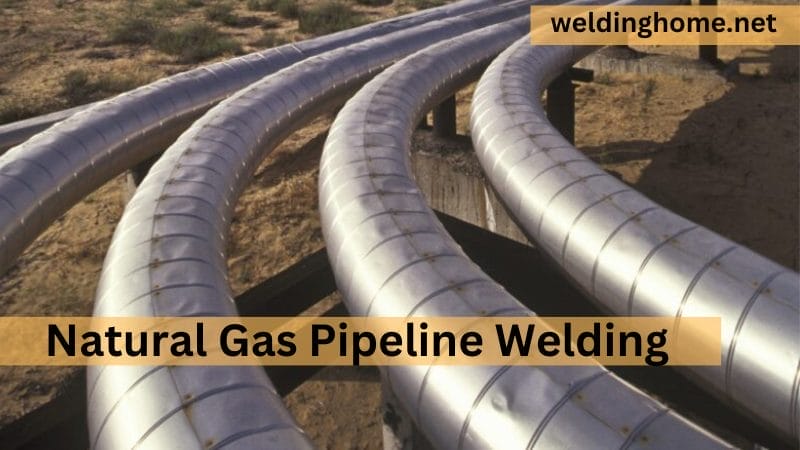What Is Cold Welding, And How Does It Work? An In-depth Guide 2023

Cold welding is an intriguing phenomenon found in the vast field of metallurgy. Unlike conventional welding methods, cold welding challenges convention by joining metal surfaces without the requirement for such great heat or molten metals. Under pressure, metals are brought together in a fascinating process that produces seamless connections that are both strong and accurate. Join us as I explore the inner workings and amazing powers of cold welding as we seek to learn its mysteries.
What Is Cold Welding, And How Does It Work?
For over a century, industry professionals have utilized the power of cold welding, creating strong bonds between two metals without molten metal or hot sparks. What is cold welding? How Does It Work? An In-depth Guide 2023
Cold welding is a process much like soldering and brazing but with one significant difference – heat. Instead, two metals are joined together when they come into contact under pressure and force. The resulting bond forms between the atoms on the surface of each metal as they become compressed against each other. This revolutionary process has several advantages that other welding processes do not possess – making it an invaluable resource for businesses seeking to weld high-strength and reliable connections.
1. What is Cold Welding Used For?
Cold welding can join metal components without melting, avoiding potentially weakened welds and cracks. Typical uses of cold welding include butt or lap joints in aerospace engineering, automotive parts fabrication, and laboratory experiments involving joining wires together – all while freezing the electrons around an atomic-level bond.
iTs are also used to join rare earth magnets, which have unique properties of attraction and repulsion. Cold welding is the perfect solution when laying underground wires to keep flammable gasses from igniting or when sealing sensitive containers where heat could cause serious harm.
It’s a reliable technique for joining dissimilar metals and providing superior strength in highly specialized situations.
Read more: How to Connect Metal without Welding 6 Easy Steps
What materials can you fix the weld?

Many materials, including metals, plastics, and composites, can be fixed welded. Cold welding is a process that doesn’t require heat or melting to join two materials together. This makes it ideal for joining materials sensitive to heat or applications requiring welding to be done quickly and efficiently.
2. What are the disadvantages of cold welding?
Cold welding offers a unique advantage not found elsewhere in the fabrication world: no heat-affected zone. Join dissimilar metals without fear and create welds as vital, if not stronger, than its parent materials. Cold welding has inherent drawbacks, such as requiring extreme cleanliness for satisfactory results and limited scope due to ductile metal requirements – both expensive undertakings within a high-volume scenario.

3. Is cold welding better than welding?
Cold welding has completely transformed the world of metalwork fabrication, revolutionizing traditional welding methods. Unlike its predecessor, cold welding offers a much safer approach to joining metals together – no hazardous chemicals or extremely high temperatures are required! It is faster than other options and more precise in joint location strength and reliability.
It also drastically reduces warping due to localized heat on top of being cost-effective, with minimal tools needed for completion. Step aside traditional process- this safe alternative will remain unparalleled when riveting two pieces into one
4. What machine is used for Binding metal

A machine used for cold welding is typically a benchtop welder that uses an arc to weld two pieces of metal together. The process is similar to arc welding, but the heat generated by the angle is insufficient to melt the metal. Instead,
the heat creates a bond between the metals at the atomic level. Welding is a cost-effective, simple way to join two different metals. This approach has become increasingly popular due to its convenience and time-saving advantages compared to traditional methods of connecting dissimilar materials, such as aluminium and steel.
5. What is the price of a cold-welding machine?
Cold-welding machines are essential tools for many manufacturing and engineering processes. The price of a cold-welding machine is determined by its specific capabilities, size, and power.

Generally, the cost of cold-welding machines can range from as low as several hundred dollars to thousands of dollars, depending on their features and size. For instance, a basic model might cost around $500, while more advanced models or larger units could go up to $5,000 or even beyond that.
How strong are combining welds?
The result of combining welds is also generally more potent than other types of welds, those in search of cost-efficacy coupled with reliability and resilience. Its precision nature and lack of heat input produce a bond that surpasses the strength found in parent metals – all without the risk of distortion or deformation during assembly!
Not to mention, aesthetically pleasing joints are ensured free from any visible scarring or spatter, making this process ideal for cosmetic applications requiring tight tolerances. In summary: cold welds offer many benefits over traditional weld processes — offering something exceptional for anyone seeking dependable results at minimal expense.
What temperature is too fusing for welding?
fusing welding is an outstanding solution for cost-efficacy, reliability, and resilience. Temperature is one of the most crucial components in successful welding.
When temperatures fall below 250°C (482°F), inadequate heat to bond materials means an increased risk for unsuccessful welds, cracking, and other thermal stress problems during cooling after welding – making it more costly and time-consuming.
Preheating offers an invaluable service when the highest welding quality standards are required. Gradually and evenly transfer heat from a furnace into thicker sections before welding, reducing thermal shock and improving penetration with fewer visible imperfections in cooled parts post-welding. Preheat your metals today for results that truly speak volumes tomorrow!
How long does it take for the cold weld to dry?
Cold welding does not require drying time; the joint is ready for use immediately. This process is speedy, with some welds taking as little as one second to complete. Joining welding also does not produce any hazardous fumes or waste products.
joining welding does not require special tools or skills to operate—all that is needed is a pressurized gas source and the appropriate electrode.
As a result, this process is simple to learn and use, making it ideal for environments where personnel with limited experience are available. With its quick results and overall simplicity, it’s no fix wonder welding is becoming a more popular choice for those looking to join materials quickly and efficiently.
Can cold welding be done on Earth?
The answer is yes! Cold welds are typically applied to flat, clean surfaces. This includes various base materials, including metals, plastics, and composites. As previously mentioned, binding welding does not require heat or melting to join two materials; this makes it ideal for joining materials sensitive to heat or for applications where welding needs to be done quickly and efficiently.
With proper preparation of the base surfaces, linking welding can be a viable solution for many projects – regardless of their application or environment. Linking welding does not require special tools or skills to operate – all that is needed is a pressurized gas source and the appropriate electrode.
As a result, this process is simple to learn and use, making it ideal for environments where personnel with limited experience are available.
Is cold welding easy?
Yes, cold welding is a relatively straightforward process to learn and use. All that is needed is a pressurized gas source and the appropriate electrode. fusing welding is a no-fuss solution for quickly and easily joining two materials. Whether it be metals, plastics, or composites, this process will do the trick without requiring extra heat or melting!
Best of all, even inexperienced personnel can employ fixed welding as minimal tools are needed to run the show. Get your project finished in record time with zero hassle thanks to unique technology known as combining Welding!
Conclusion
Cold welding is the joining of two different metals when the entire assembly’s temperature is below the metals’ melting point. In this process, the two metals are forced together at room temperature and are then cooled to form a permanent bond.
In most welding processes, heat is applied to a metal assembly to melt the metals and form a weld. That heat melts the base metal and also burns away any oxides, molecules, or impurities in the base metal.
It is also used to join metals that are not ferromagnetic to each other. Cold welding joins two materials by drawing out the material on one side of the joint. The process uses a gas such as helium or nitrogen. It is also used to join metals that are not ferromagnetic to each other.
FAQ’S
Does cold welding work?
Cold welding can ensure fast and strong joins in wires and is commonly used with aluminium, 70/30 brass, copper, gold, nickel, silver, silver alloys, and zinc. Cold welding is also suitable for joining dissimilar metals that can be difficult to weld effectively.
Is cold welding the same as MIG welding?
Cold metal transfer (CMT) is a fusion welding process that uses a welding arc to create a joint. It’s often mislabeled as “cold welding,” which is confusing. CMT is a MIG welding process that requires about 90% less heat input than a regular MIG welding process. Aug 2, 2022
What is the most straightforward welding to learn?
MIG welding (metal inert gas welding) is often considered the most accessible type of welding for a beginner to learn. MIG welders have a wire welding electrode on a spool which is then fed through a welding gun at a preselected speed






